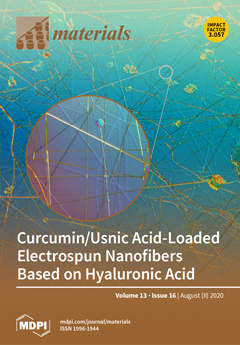The local regeneration of bone defects is regulated by general hormone, enzyme, ion, and vitamin levels. General diseases and dysregulation of the human mineral system can impact this process, even in alveolar crest. The aim of this study is to investigate a relation
[...] Read more.
The local regeneration of bone defects is regulated by general hormone, enzyme, ion, and vitamin levels. General diseases and dysregulation of the human mineral system can impact this process, even in alveolar crest. The aim of this study is to investigate a relation between bone density, measured in two-dimensional X-rays, and general mineral condition of patients. The study included 42 patients on whom tooth extractions were performed. Data were divided into two groups: the region where collagen scaffold (BRM) was used and the reference region of intact normal bone (REF). Two-dimensional intraoral radiographs were taken in all cases just after the surgery (00 M) and 12 months later (12 M). Thyrotropin (TSH), parathormone (PTH), Ca
2+ in serum, HbA1c, vitamin 25(OH)D
3, and spine densitometry were checked. Digital texture analysis in MaZda 4.6 software was done. Texture Index (TI: BRM 1.66 ± 0.34 in 00 M, 1.51 ± 0.41 in 12 M, and REF 1.72 ± 0.28) and Bone Index (BI: BRM 0.73 ± 0.17 in 00 M, 0.65 ± 0.22 41 in 12 M, and REF 0.80 ± 0.14) were calculated to evaluate bone regeneration process after 12 months of healing (TI (
p < 0.05) and BI (
p < 0.01) are lower in BRM 12 M than in REF). This showed a relation between BI and TSH (R
2 = 26%,
p < 0.05), as well as a between BI and patient age (R
2 = 65%,
p < 0.001), and a weak relation between TI and TSH level (R
2 = 10%,
p < 0.05). This study proved that a collagen scaffold can be successfully used in alveolar crest regeneration, especially in patients with a high normal level of TSH in the middle-aged population.
Full article






